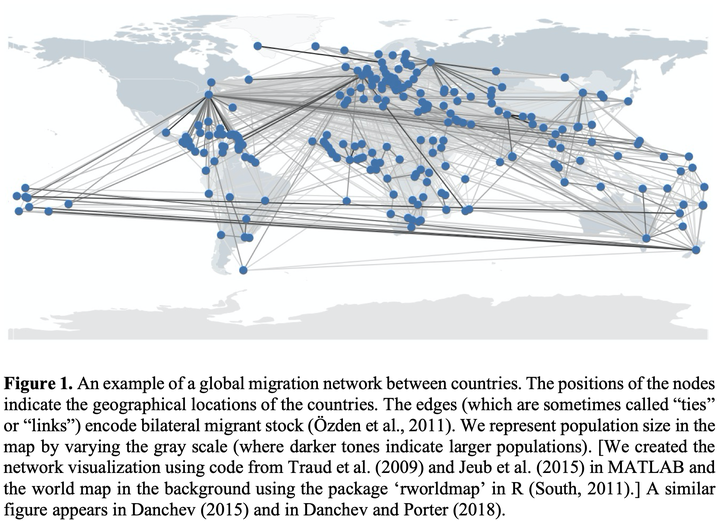Migration Networks: Applications of Network Analysis to Macroscale Migration Patterns

Abstract
An emerging area of research is the study of macroscale migration patterns as a network of nodes that represent places (e.g., countries, cities, and rural areas) and edges that encode migration ties that connect those places. In this chapter, we first review advances in the study of migration networks and recent work that has employed network analysis to examine such networks at different geographical scales. In our discussion, we focus in particular on global-scale migration networks. We then propose ways to leverage network analysis in concert with digital technologies and online geolocated data to examine the structure and dynamics of migration networks. The implementation of such approaches for studying migration networks faces many challenges, including ethical ones, methodological ones, socio-technological ones (e.g., data availability and reuse), and research reproducibility. We detail these challenges, and we then consider possible ways of linking digital geolocated data to administrative and survey data as a way of harnessing new technologies to construct increasingly realistic migration networks (e.g., using multiplex networks). We also briefly discuss new methods (e.g., multilayer network analysis) in network analysis and adjacent fields (e.g., machine learning) that can help advance understanding of macroscale patterns of migration.